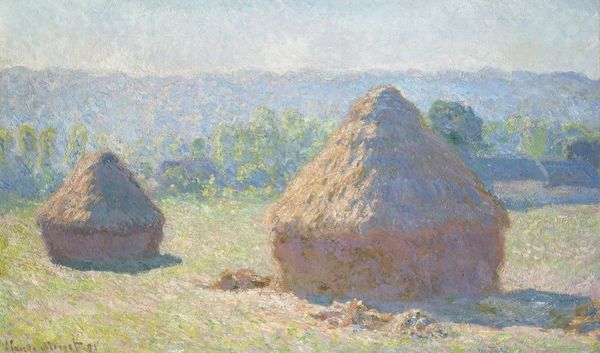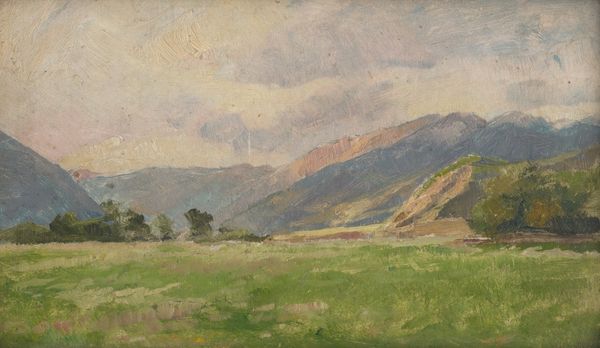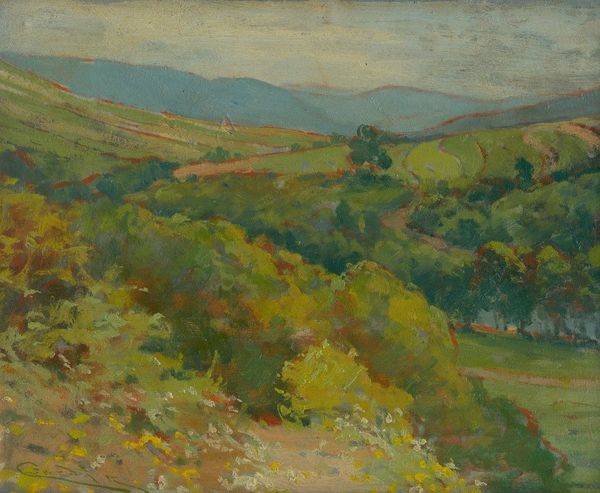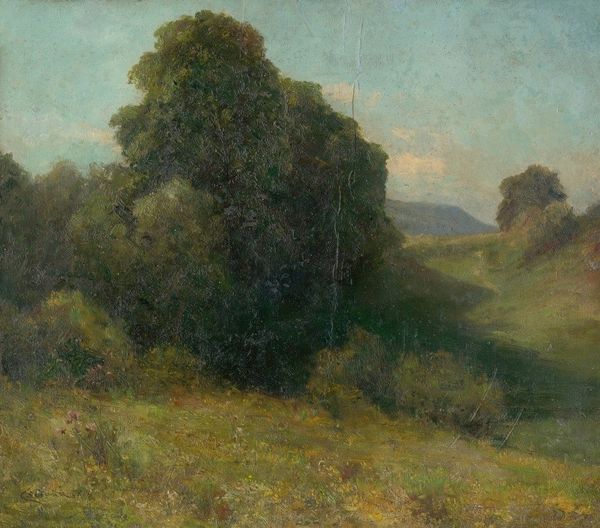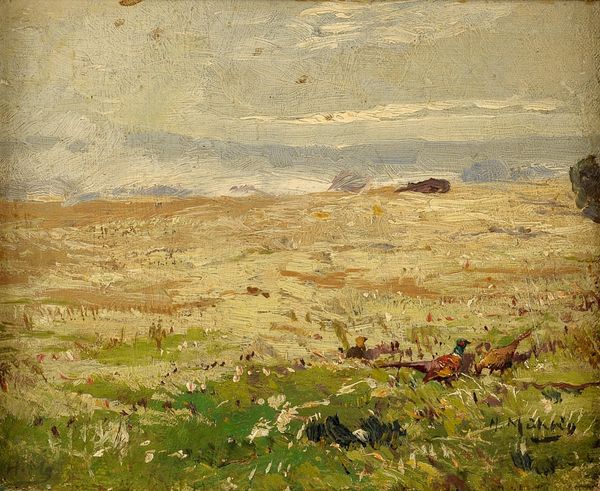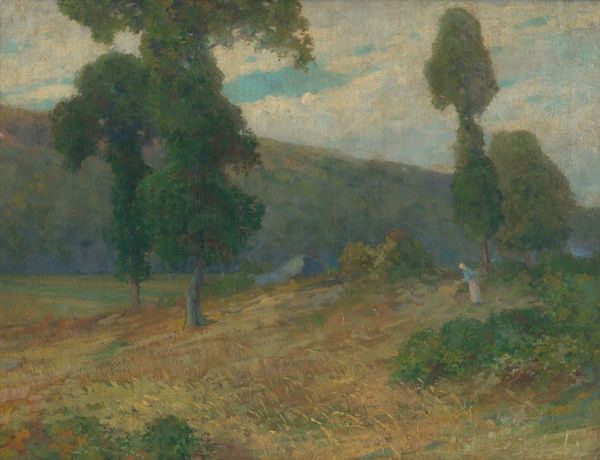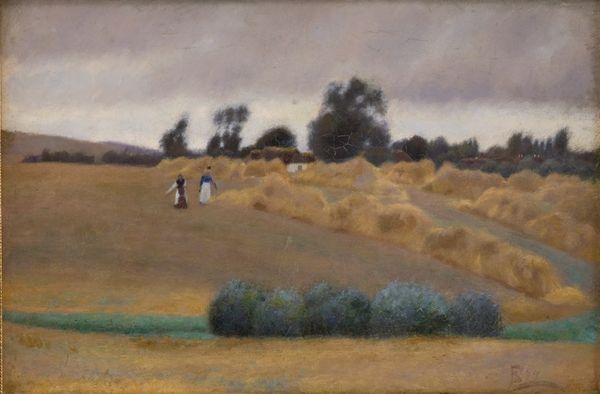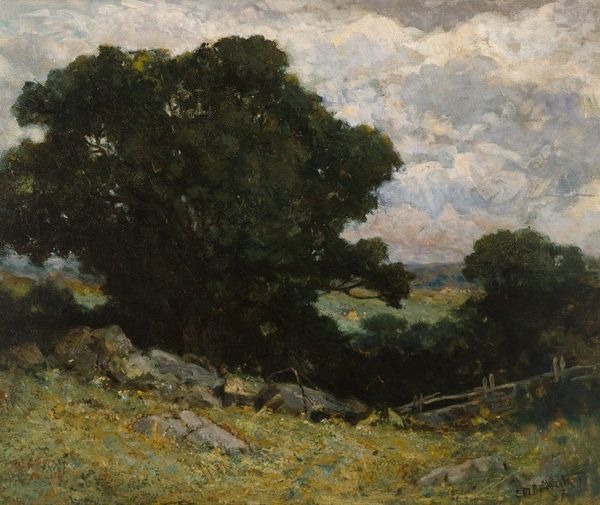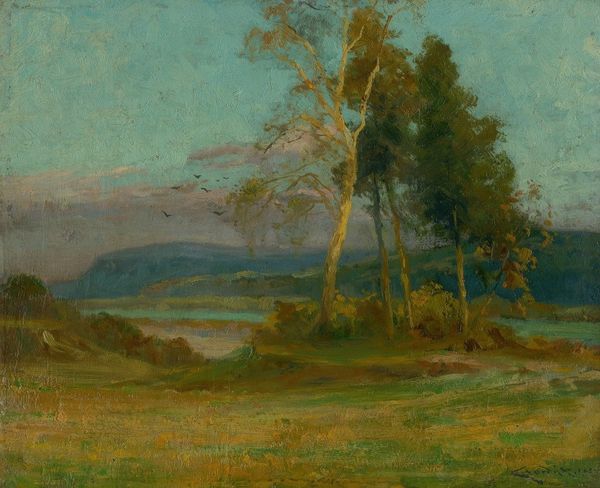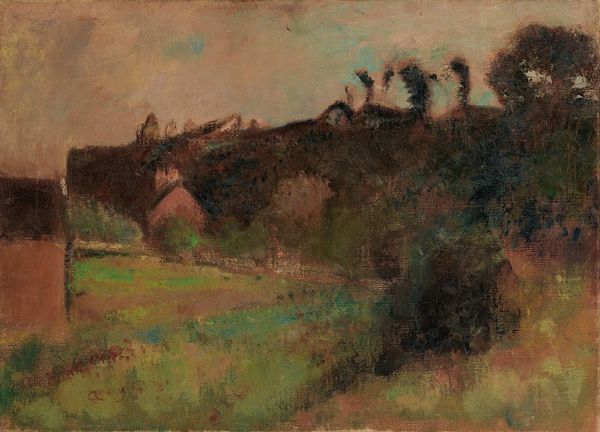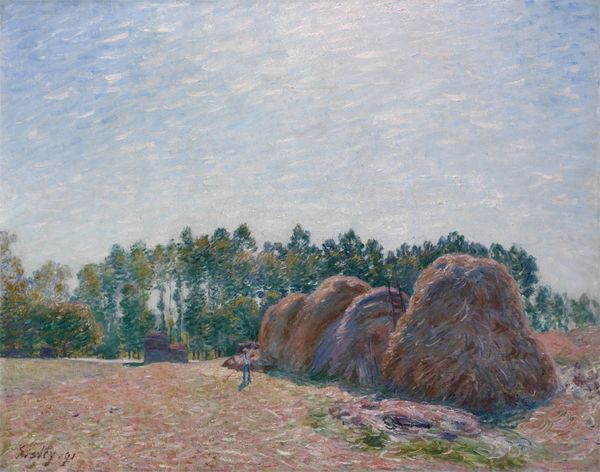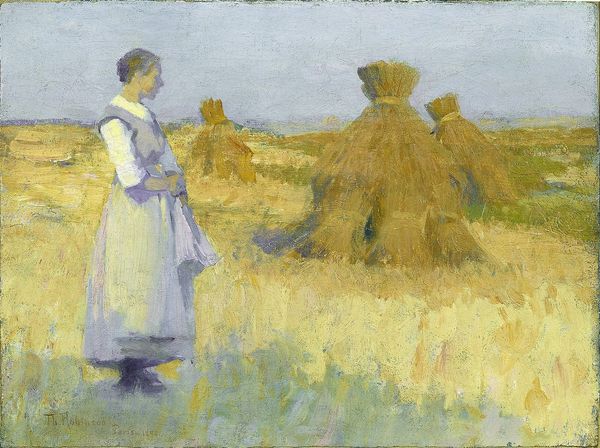
Copyright: Public Domain: Artvee
Editor: So, here we have Ľudovít Čordák's "Summer," painted around 1904-1905. It's an oil painting depicting a rural landscape. I'm immediately drawn to the stillness of the scene; there’s something so peaceful and quiet about it. What do you see in this piece? Curator: I see a visual representation of agrarian life at the turn of the century, ripe with implications about class and labor. These stacks of hay, painted with such broad strokes, speak to a direct relationship with the land. Consider who is absent from this scene. Where are the figures who toiled to create this landscape? Does their absence speak to a romanticization of rural labor, or something else? Editor: That’s interesting, I hadn’t thought about the absence of figures. It does feel romanticized in a way, the soft colours and hazy light kind of gloss over the hard work involved. Is that a common theme in landscape paintings from this period? Curator: Frequently, yes. Landscape paintings are rarely just about the land itself. They are social documents that reveal much about the politics and ideology of their time. Whose land is being represented, and who benefits from its depiction? These are essential questions to ask. This image is also reminiscent of earlier impressionistic work. How does understanding its historic connection inform our own contemporary context and perspectives? Editor: So, by acknowledging the social context and the unseen labor, it kind of shifts my understanding from a purely aesthetic appreciation to a more critical perspective? Curator: Precisely. And that shift is crucial for a nuanced understanding of art history. Consider how gender and class also influence how landscape is interpreted in modern contexts. Editor: Wow, I'll never look at a landscape painting the same way again! Curator: Exactly! Recognizing these deeper layers helps us to connect historical works with our own contemporary realities.
Comments
No comments
Be the first to comment and join the conversation on the ultimate creative platform.

